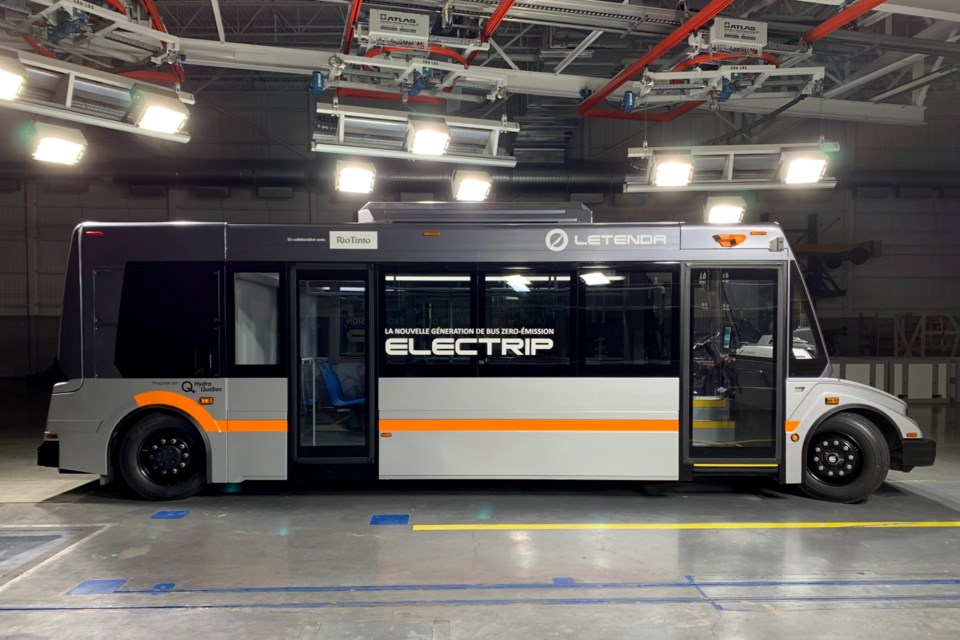Taking their first steps toward the electrification of GOVA Transit services, the City of Greater Sudbury has set its sights on having the entire fleet of 59 diesel buses electric by 2035.
“We’re very hopeful to achieve that goal and are excited about that opportunity,” city director of transit services Brendan Adair told Sudbury.com.
“It’s exciting to be talking about this, when you think about the growth of transit and where we can be in as short as 13 years.”
Pending the results of a needs study to be completed by a consultant this year, which city council approved during 2022 budget deliberations in December, Adair hopes to see the city “dip our toe into electrification” with the purchase of at least one electric bus by next year.
That is, pending the results of the study and city council approval.
For economist and Sudbury Ontario Green Party candidate David Robinson, the city’s progress toward electrification has been too slow-moving given the climate crisis we find ourselves in.
He affirmed as much in a recent social media post, which he elaborated on in conversation with Sudbury.com last week during Ontario Green Party Leader Mike Schreiner’s stop in Sudbury.
“It’s cheaper for the city in the long run,” he said, pointing to the City of Saskatoon’s electric bus pilot program, which revealed a potential savings of $66 million ($3.6 million annually) if they went all-electric with their fleet of 140 buses.
“That pays for itself for God’s sake,” Robinson said, adding that rather than wait for the city to ease into the world of electric buses they need to jump in feet first.
“We want to be seen as a green city, and you can’t drag your feet, you need to make a dramatic move,” he said.
His immediate solution is to postpone the Kingsway Entertainment District and shift the $90 million in debt taken out for that project toward a fully electric public transportation system instead, which he argues would end up saving the city millions of dollars in the long run.
“Moving aggressively to electrified buses is the fastest way to bring affordable transportation solutions to people,” Schreiner told Sudbury.com, pledging to have the province upload 50 per cent of transit costs from municipalities to keep the service affordable and to pledge funding to help municipalities shift toward electric vehicles, if elected.
As it already stands, Adair said the city might already tap into the federal Zero Emissions Transit Fund, which contributes up to 80 per cent of eligible cost toward such projects. The federal government pledged $2.75 billion in short-term transit spending last year.
As for the speed with which the city transitions toward electric buses, Adair said there’s much for the city to consider beyond the purchase of electric buses, which at more than $1 million each is a significant leap from the $600,000 to $650,000 cost attached to diesel buses.
Charging facilities will be an important hurdle to overcome, he said, noting that this will not only come at a cost but also raises the question of whether there’s enough electrical grid capacity in the current facility.
The range of vehicles’ electric charge and how well they handle winter conditions and local topography are all considerations, as well as whether they would impact current service levels.
This, Adair said, is why this year’s review will be so important, as they intend to compile “concrete data in terms of our infrastructure, our routes, our climate and making sure that whatever we do proceed with … also considers the rider and ensures that the service is either the same or better with electrification.”
A consultant hasn’t been hired to handle the study yet, but the goal is for the report to be completed this year and potentially lead to a business case recommendation for city council consideration during 2023 budget deliberations.
In this year’s business case for the needs study, it’s noted that the cost to start an electric bus pilot program with two vehicles and their required charging infrastructure and operational requirements would be approximately $4 million.
Last year, the city added 10 new buses to its fleet to replace aging vehicles as part of a plan to replace 53 aging buses by 2028. The buses lined up are diesel machines and carry lifespans of approximately 12 years, which Adair said is a path that would easily undermine their target of achieving a 100 per cent electric transit fleet by 2035.
As such, he said the multi-year purchase plan with the help of Investing in Canada Plan funding from all three tiers of government will likely need to be altered at some point to switch from diesel vehicles to battery-electric.
Along with their transit fleet, the city’s Community Energy and Emissions Plan requires that the balance of the city’s fleet of vehicles also be electric by 2035 and that 25 per cent of travellers use public transit by 2050.
Tyler Clarke covers city hall and political affairs for Sudbury.com.
